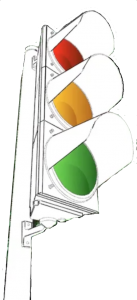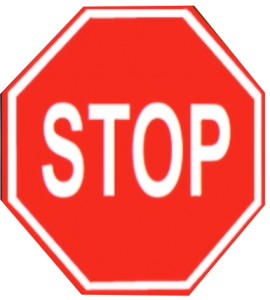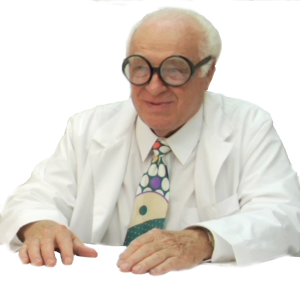
Signals:
• A flashing yellow light means slow down, cover your brake, and be prepared to stop if necessary.
• A solid yellow light means a red light is coming so be prepared to stop.
• A flashing red light at an intersection is directing you to stop before reaching the crosswalk and then proceed when you can do so safely.
• Unless there is a sign that says; no right turn on red, then at a solid red light you’re allowed to make a right turn after coming to a complete stop. Make sure the road is safe before you turn onto it.
• At a solid red light, you can make a turn left from a one-way street onto another one-way street if it’s going left. You have to come to a complete stop first.
• A solid green light means, proceed.
• If a traffic signal is obviously broken or not working due to a power outage, then treat that intersection like a four way stop. That means everybody stop.
Sign Shapes:
• A red octagonal shaped sign means stop.
• A red and white triangular sign you need to yield the right-of-way.
• Brown signs are for scenic destinations.
• Green signs in the shape of a rectangle will tell you the name of a street name or city and provide distance and direction.
• Blue signs are service signs. Look for these signs to help find service stations, places to eat, rest areas, phones and overnight facilities.
• Yellow signs are warning signs and alert drivers of existing for potentially hazardous road conditions. Yellow pennant-shaped signs caution motorists where passing is unsafe.
Pavement Markings:
• Pavement markings help to warn, regulate and direct traffic.
• The markings may be either white or yellow with each having a different meaning.
• Sometimes a white stop line is painted across pavement lanes at traffic signs and signals.
• If you have to stop at a sign or signal, make sure you stop behind these lines whenever they’re there.
• Solid white lines are used for pavement-edge lines shoulder markings, traffic channeling and for lane control for traffic going in the same direction.
• Yellow lines or centerlines perform many of these same functions, but they always separate traffic flowing in opposite directions.
• Anytime traffic lines are dashed or broken, pass with care.
• When traffic lines are solid, do not pass or crossover them. Exceptions are:
– When turning left across traffic, then it is okay to cross over the solid yellow or white line. Double solid lines are not to be crossed. For example, on four-lane road, never cross the double yellow line to pass. The only time you may cross a double yellow line is when making a left turn only.
• Lanes reserved for turning are called turn lanes.
• You may also find turn lanes at intersections.
– Turn lanes are there to help give drivers more time to make their turn, to ease the flow of traffic and help reduce the chances of possible crashes.
• A two-lane road with a dashed yellow lane in the middle. For this marking you can pass whenever it is safe to do so.
– In cases it is not safe to pass because of an upcoming hill, curve or intersection, you will see a solid line on one side of the road.
– If you have a solid line on the side you are driving on. This means, do not pass.
Sign Shapes and Colors:
 • A yellow diamond warns you of possible hazards ahead.
• A yellow diamond warns you of possible hazards ahead.
• A yellow pentagon is for school crossing or a pedestrian zone.
• A round yellow sign warns you of an approaching railroad crossing.
• Vertical rectangular black and white signs regulate functions such as speed limits, turns and directions.
• Bright orange signs warn you of construction or road maintenance.
All material in this video is the Copyright of Comedy Defensive Driving School. ® is the Federally Registered Trademark of IDT, Inc. All rights reserved 1989-2018 **This course fulfills the requirements of the Traffic Ticket Dismissal for ALL courts in Texas and for Insurance reduction. This course can also be taken voluntarily to brush up on your driving skills.**
